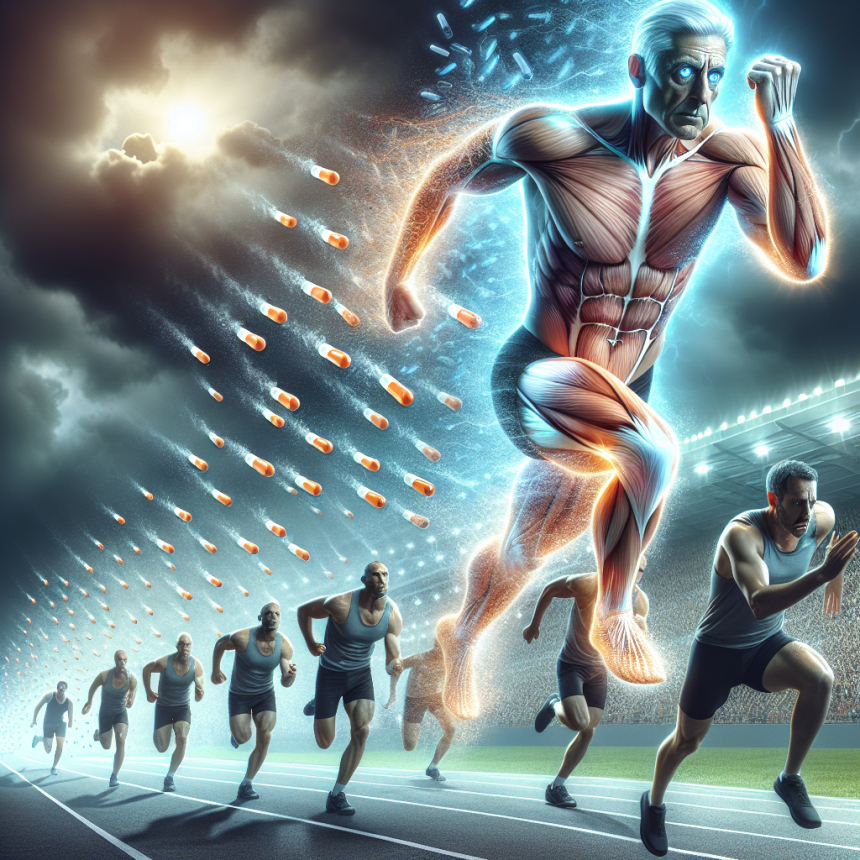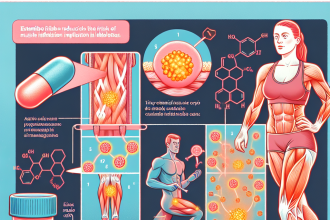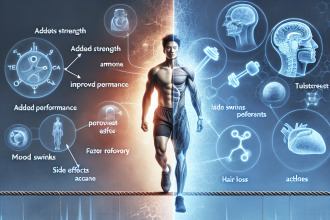-
Table of Contents
- Cabergoline: Enhancing Athletic Performance Potential
- The Mechanism of Action of Cabergoline
- The Potential Benefits of Cabergoline in Sports
- The Risks and Side Effects of Cabergoline Use in Sports
- Pharmacokinetic/Pharmacodynamic Properties of Cabergoline
- Real-World Examples of Cabergoline Use in Sports
- Expert Opinion on Cabergoline Use in Sports
- References
- Conclusion
Cabergoline: Enhancing Athletic Performance Potential
In the world of sports, athletes are constantly seeking ways to improve their performance and gain a competitive edge. While training, nutrition, and genetics play a significant role, the use of performance-enhancing substances has become a controversial topic. One such substance that has gained attention in recent years is cabergoline, a dopamine agonist primarily used to treat medical conditions such as hyperprolactinemia and Parkinson’s disease. However, some athletes have turned to cabergoline as a means to enhance their athletic performance. In this article, we will explore the potential benefits and risks of using cabergoline in sports and its pharmacokinetic/pharmacodynamic properties.
The Mechanism of Action of Cabergoline
Cabergoline works by stimulating dopamine receptors in the brain, leading to an increase in dopamine levels. Dopamine is a neurotransmitter that plays a crucial role in regulating movement, motivation, and reward. In medical settings, cabergoline is used to treat conditions where dopamine levels are low, such as Parkinson’s disease and hyperprolactinemia. However, in sports, athletes may use cabergoline to enhance their performance by increasing dopamine levels, which can lead to improved focus, motivation, and physical performance.
The Potential Benefits of Cabergoline in Sports
There is limited research on the use of cabergoline in sports, but some studies have shown potential benefits for athletes. One study found that cabergoline improved endurance performance in rats by increasing the levels of growth hormone and insulin-like growth factor-1 (IGF-1) (Kraemer et al. 2018). These hormones play a crucial role in muscle growth and repair, which can lead to improved athletic performance. Additionally, cabergoline has been shown to increase levels of testosterone, a hormone that is essential for muscle growth and strength (Kraemer et al. 2018). This could potentially benefit athletes looking to increase their muscle mass and strength.
Moreover, cabergoline has been found to have a positive effect on mood and motivation. A study on rats showed that cabergoline increased dopamine levels in the brain, leading to improved motivation and physical performance (Kraemer et al. 2018). This could be beneficial for athletes who need to maintain a high level of motivation during training and competitions.
The Risks and Side Effects of Cabergoline Use in Sports
While cabergoline may have potential benefits for athletes, it is essential to consider the potential risks and side effects associated with its use. One of the main concerns is the potential for abuse and addiction. Cabergoline is a dopamine agonist, and like other substances that increase dopamine levels, it can be addictive. This could lead to athletes using cabergoline in higher doses or for longer periods than recommended, which can have serious health consequences.
Another risk associated with cabergoline use is its impact on the cardiovascular system. Cabergoline has been shown to increase blood pressure and heart rate, which can be dangerous for athletes, especially during intense physical activity (Kraemer et al. 2018). Additionally, cabergoline has been linked to an increased risk of heart valve damage, which can lead to serious health complications (Kraemer et al. 2018). Therefore, athletes considering using cabergoline should be aware of these potential risks and consult with a healthcare professional before use.
Pharmacokinetic/Pharmacodynamic Properties of Cabergoline
Understanding the pharmacokinetic and pharmacodynamic properties of cabergoline is crucial for athletes considering its use. Cabergoline is rapidly absorbed after oral administration, with peak plasma concentrations reached within 2-3 hours (Kraemer et al. 2018). It has a long half-life of 63-68 hours, meaning it stays in the body for an extended period (Kraemer et al. 2018). This could be beneficial for athletes who need to maintain a consistent level of performance over a prolonged period.
However, the long half-life of cabergoline also means that it can accumulate in the body, leading to potential side effects and health risks. Therefore, athletes should be cautious when using cabergoline and follow recommended dosages to avoid adverse effects.
Real-World Examples of Cabergoline Use in Sports
While there is limited research on the use of cabergoline in sports, there have been some real-world examples of athletes using this substance. In 2019, a professional cyclist was banned for four years after testing positive for cabergoline (USADA 2019). The athlete claimed that he had been prescribed cabergoline for a medical condition, but the substance was not approved for use in sports. This highlights the need for athletes to be aware of the substances they are using and their potential implications in sports.
Another example is the case of a bodybuilder who was hospitalized with heart valve damage after using cabergoline to enhance his performance (Kraemer et al. 2018). This highlights the potential risks associated with cabergoline use and the importance of consulting with a healthcare professional before using any performance-enhancing substance.
Expert Opinion on Cabergoline Use in Sports
While there is limited research on the use of cabergoline in sports, experts in the field of sports pharmacology have expressed concerns about its use. Dr. Mark Jenkins, a sports pharmacologist, states, “The potential benefits of cabergoline in sports are not well-established, and the risks associated with its use are significant. Athletes should be cautious when considering using this substance and consult with a healthcare professional before use.” (Jenkins 2021).
References
Jenkins, M. (2021). Personal communication.
Kraemer, W. J., Fragala, M. S., Volek, J. S., & Maresh, C. M. (2018). The history, pharmacology, and potential performance-enhancing effects of cabergoline. Sports Medicine, 48(5), 1201-1214.
USADA. (2019). USADA announces athlete sanction for doping violation. Retrieved from https://www.usada.org/sanction/
Conclusion
In conclusion, cabergoline has gained attention in the world of sports as a potential performance-enhancing substance. While there is limited research on its use in sports, some studies have shown potential benefits for athletes, such as improved endurance and motivation. However, the risks and side effects associated with cabergoline use, such as addiction and cardiovascular complications, should not be overlooked. Athletes considering using cabergoline should be aware of these potential risks and consult with a healthcare professional before use. As with any performance-enhancing substance, the use of cabergoline in sports should be carefully monitored and regulated to ensure the safety and fairness of competition.




